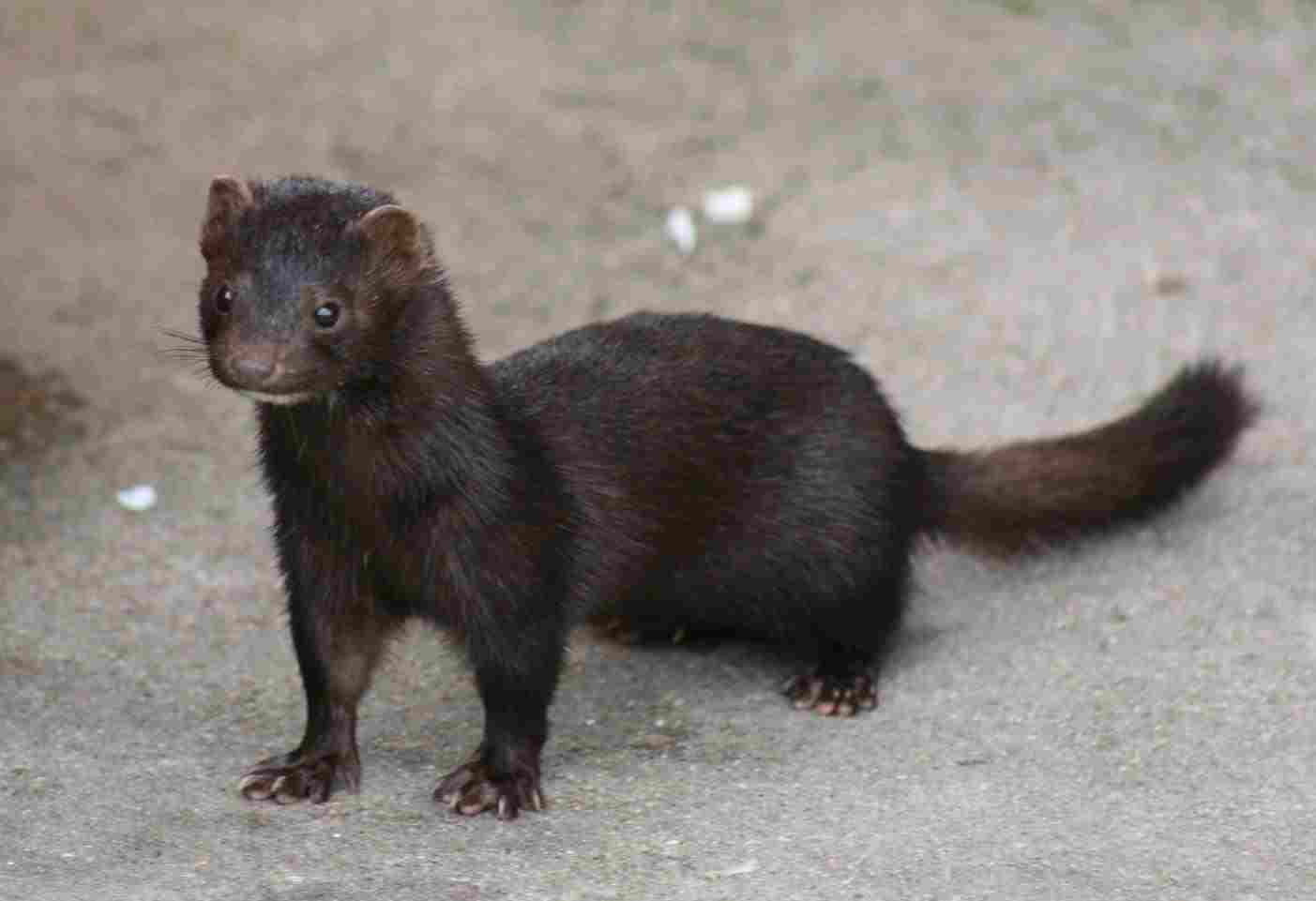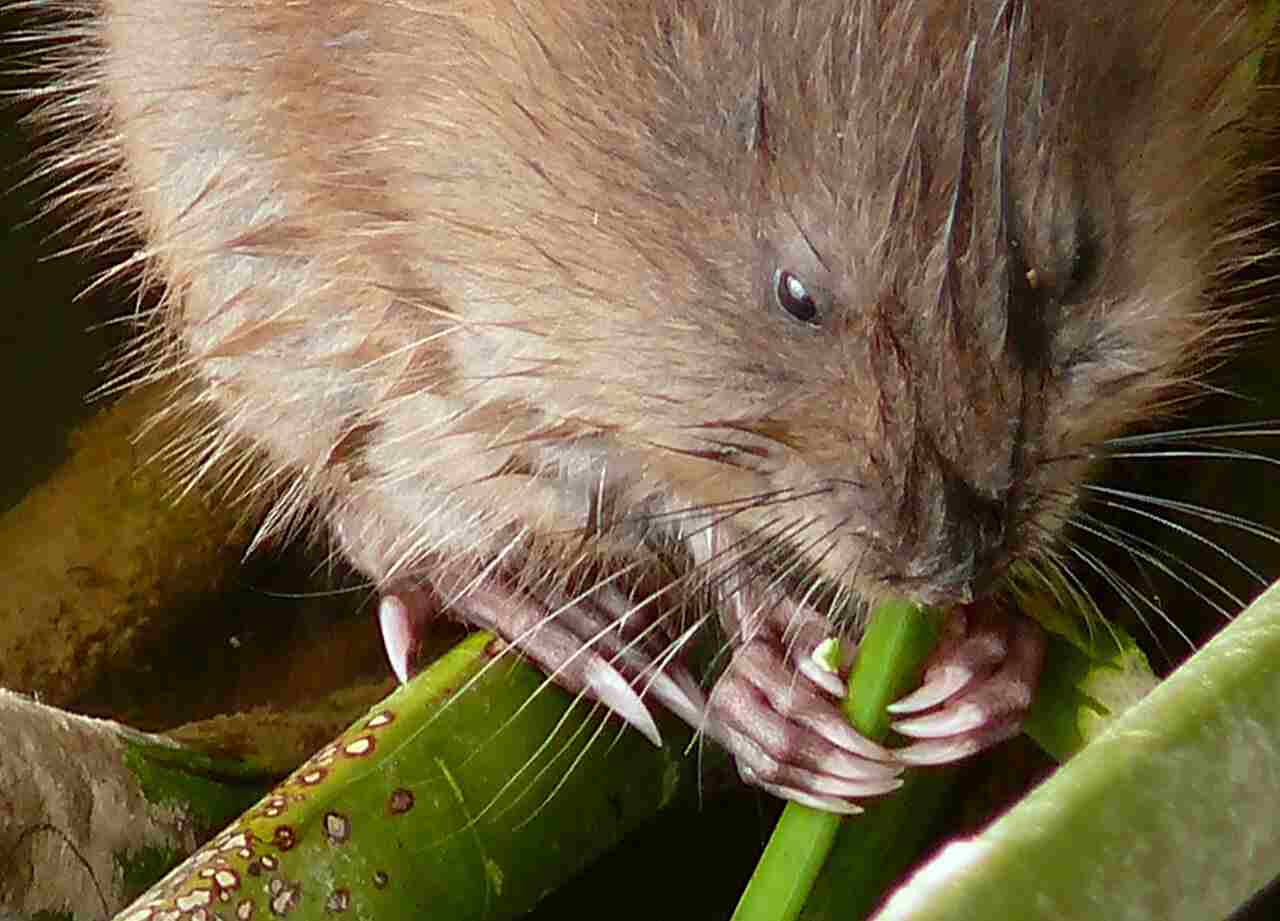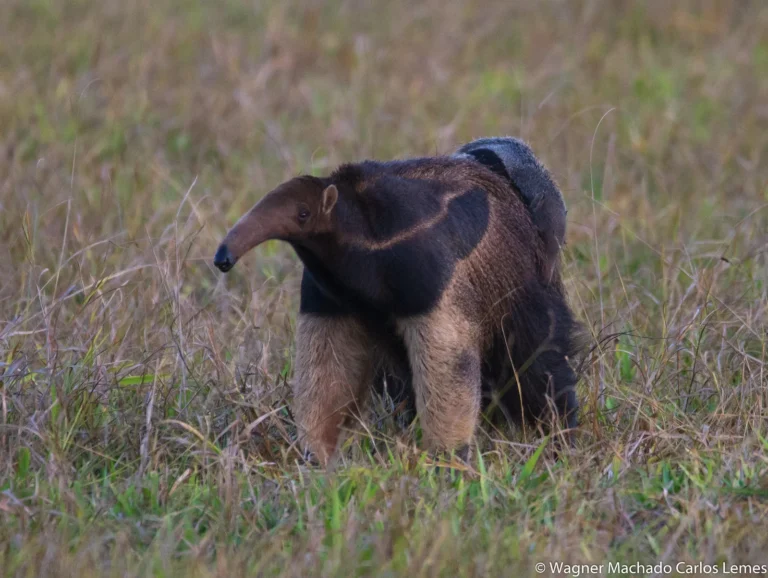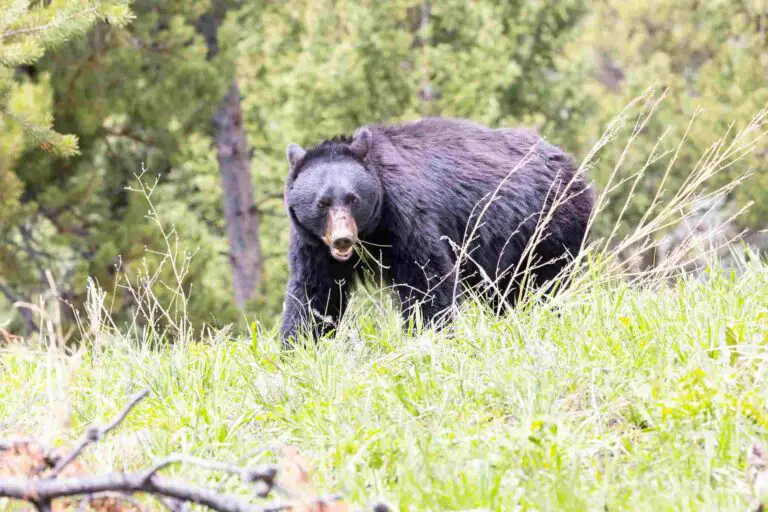Mink Vs Fisher Cat Size, Weight, Overall Comparison Introduction:
In an encounter between a mink and a fisher cat, both members of the Mustelidae family, we delve into the potential dynamics of this confrontation. Despite their shared family, these two animals can be differentiated by size and tail morphology. This analysis aims to highlight the distinctions between minks and fisher cats and assert that the fisher cat would likely emerge victorious in a physical encounter due to its substantial size and weight advantage.
Mink vs Fisher Cat: Assessing the Likely Victor in a Confrontation
In a scenario involving a mink and a fisher cat, both belonging to the Mustelidae family, the outcome of a fight is influenced by distinctions in size and tail morphology. While these animals share some similarities, the fisher cat’s larger size and different tail characteristics may give it a significant advantage.
I). Size and Tail Morphology Differences:
– Minks and fisher cats can be differentiated by their size and tail morphology. Fisher cats are generally much larger, weighing between 3 to 7 kg, compared to minks, which typically weigh around 0.7 to 1.6 kg. Additionally, fisher cats have a longer and bushier tail, distinguishing them from the more streamlined tail of minks.
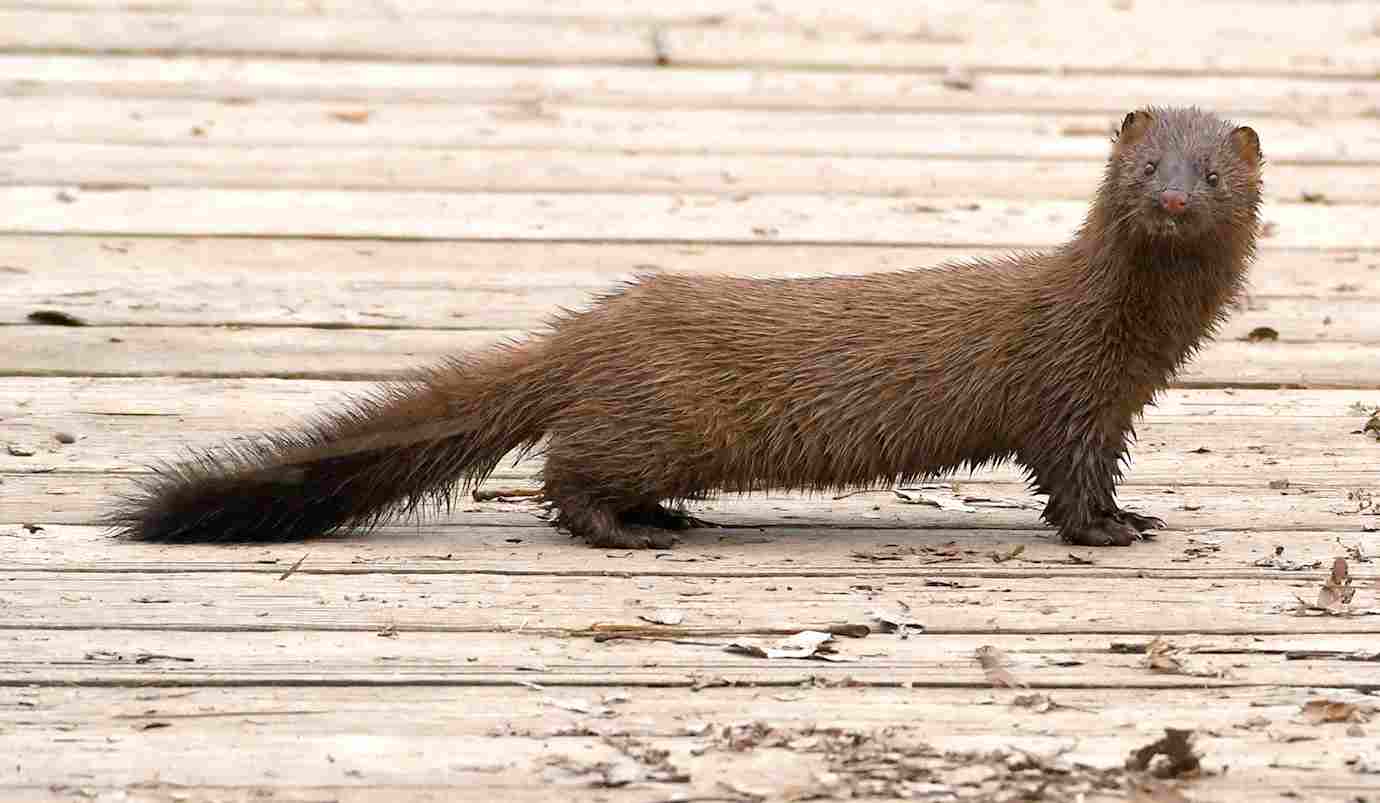
II). Fisher Cat’s Size and Weight Advantage:
– In a hypothetical fight, the fisher cat would win a mink due to its substantial size and weight advantage. The larger build of the fisher cat provides it with enhanced strength, potentially making it more formidable in a physical confrontation.
III). Potential Strategies of the Mink:
– Minks, despite their smaller size, are known for their agility and aggressive nature. In a confrontation with a fisher cat, a mink might employ defensive maneuvers and utilize its agility as potential strategies. However, overcoming the fisher cat’s size advantage could prove challenging.
IV). Overall Dynamics:
– In this hypothetical scenario, the fisher cat is likely to emerge as the victor in a fight against a mink due to its larger size and heavier build. While the mink may showcase agility and aggression, the overall dynamics favor the fisher cat in this hypothetical confrontation.
*Details of Comparison
| Criteria | Mink | Fisher Cat |
| Appearance | Sleek, semi-aquatic, varied fur colors |
Robust, grizzled appearance, dark-brown fur
|
| Size | 1.5 to 3.5 pounds |
4 to 14 pounds, generally larger
|
| Weight | Lighter | Heavier |
| Bite Force (PSI) | Moderately estimated |
Potentially stronger bite force
|
| Physical Offensive Advantages | Sharp claws, strong jaws |
Sharp claws, powerful jaws, agility
|
| Physical Defensive Advantages | Escape into water, anal scent glands |
Agility, sharp claws, musky odor
|
| Speed | 6-10 mph |
Faster, 10-15 mph
|
| Agility | Extremely agile in water and on land |
Agile climbers, adept in dense vegetation
|
| Overall Physical Capacity | Aquatic specialization |
Versatility in terrestrial and arboreal habitats
|
| Habitat Preference(s) | Freshwater habitats |
Forested areas with water sources
|
| Tracks | Webbed prints near water |
Paw prints with retractable claws
|
| Lifespan | 3 to 4 years |
7 to 10 years, generally longer
|
| Mode of Feeding | Carnivorous, different prey based on habitats |
Carnivorous, varied diet
|
| Intelligence | Problem-solving skills, adaptability |
Problem-solving skills, adaptability
|
| Social Behavior | Primarily solitary, defined territories |
Primarily solitary, defined territories
|
| Mode of Reproduction | Polygamous mating, late winter or early spring |
Polygamous mating, late winter or early spring
|
| Parental Behavior | Maternal care with protection and nourishment |
Maternal care with protection and nourishment
|
| Proximity to Human-Inhabited Areas | Tolerant, found in urban areas |
Generally shy, adapting to suburban and rural areas
|
| Behavior Toward Humans | Cautious, avoid direct contact |
Cautious, avoid direct contact
|
| Danger Posed to Humans | Low threat, rarely posing danger |
Low threat, rarely posing danger
|
| Associated Precautions | Minimize attractants, secure food sources |
Minimize attractants, secure food sources
|
| Conservation Status | Varies, some species endangered |
Generally not a species of concern
|
Key Points
Similarities:
-
- Mustelidae family, carnivorous diets, polygamous mating, and parental care.
Differences:
-
- Habitat specialization, size, weight, bite force, overall physical capacity, tracks, lifespan, mode of feeding, intelligence, social behavior, proximity to human-inhabited areas, behavior toward humans, danger posed to humans, associated precautions, and conservation status.
1. Taxonomy
Mink:
Kingdom: Animalia
Phylum: Chordata
Class: Mammalia
Order: Carnivora
Family: Mustelidae
Genus: Neovison (formerly Mustela)
Species: Vison (American mink) or Lutreola (European mink)
Fisher Cat:
Kingdom: Animalia
Phylum: Chordata
Class: Mammalia
Order: Carnivora
Family: Mustelidae
Genus: Pekania
Species: pennanti
2. Appearance
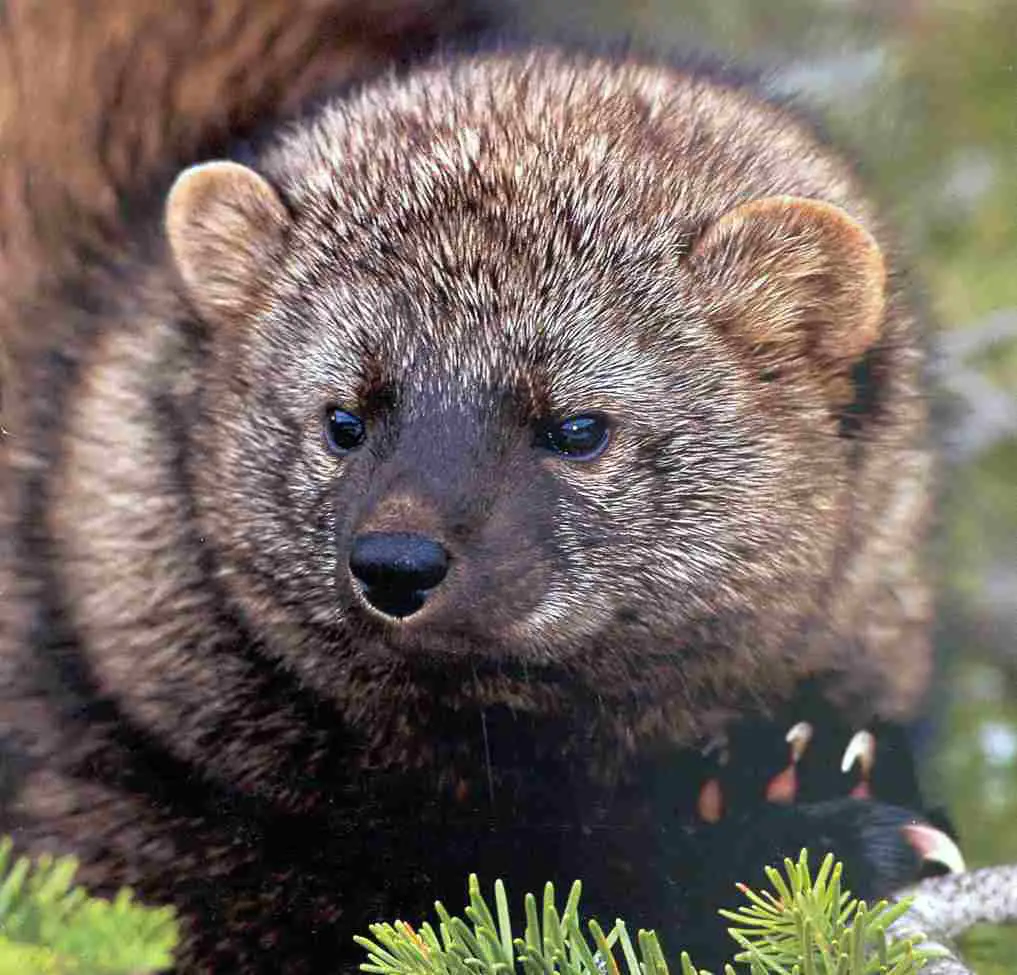
Mink:
Sleek, semi-aquatic mammals with a long, slender body
Fur color varies, typically brown with a white chin patch
Small, rounded ears and a pointed snout
Fisher Cat:
Robust, dark-brown fur with a bushy tail and a distinctive grizzled appearance
Short legs, rounded ears, and a facial mask
Comparison:
Mink exhibit a more streamlined, aquatic-adapted physique, while fisher cats have a stockier build suitable for forested environments.
Ecological Implications:
Mink’s sleek design aids in swimming, allowing them to hunt aquatic prey efficiently.
Fisher cats’ robust build is advantageous for navigating through dense vegetation in their forest habitats.
3. Size
Mink:
Length: 1.5 to 2.5 feet (including tail)
Weight: 1.5 to 3.5 pounds
Fisher Cat:
Length: 2.5 to 4 feet (including tail)
Weight: 4 to 14 pounds
Comparison:
Fisher cats are generally larger and more robust than mink.
Ecological Implications:
Size differences contribute to distinct ecological roles, with fisher cats having a broader range of prey options due to their larger size.
4. Weight
Mink:
1.5 to 3.5 pounds
Fisher Cat:
4 to 14 pounds
Comparison:
Fisher cats are significantly heavier than mink.
Ecological Implications:
Weight influences hunting strategies, with fisher cats potentially tackling larger prey due to their increased mass.
5. Bite Force (PSI)
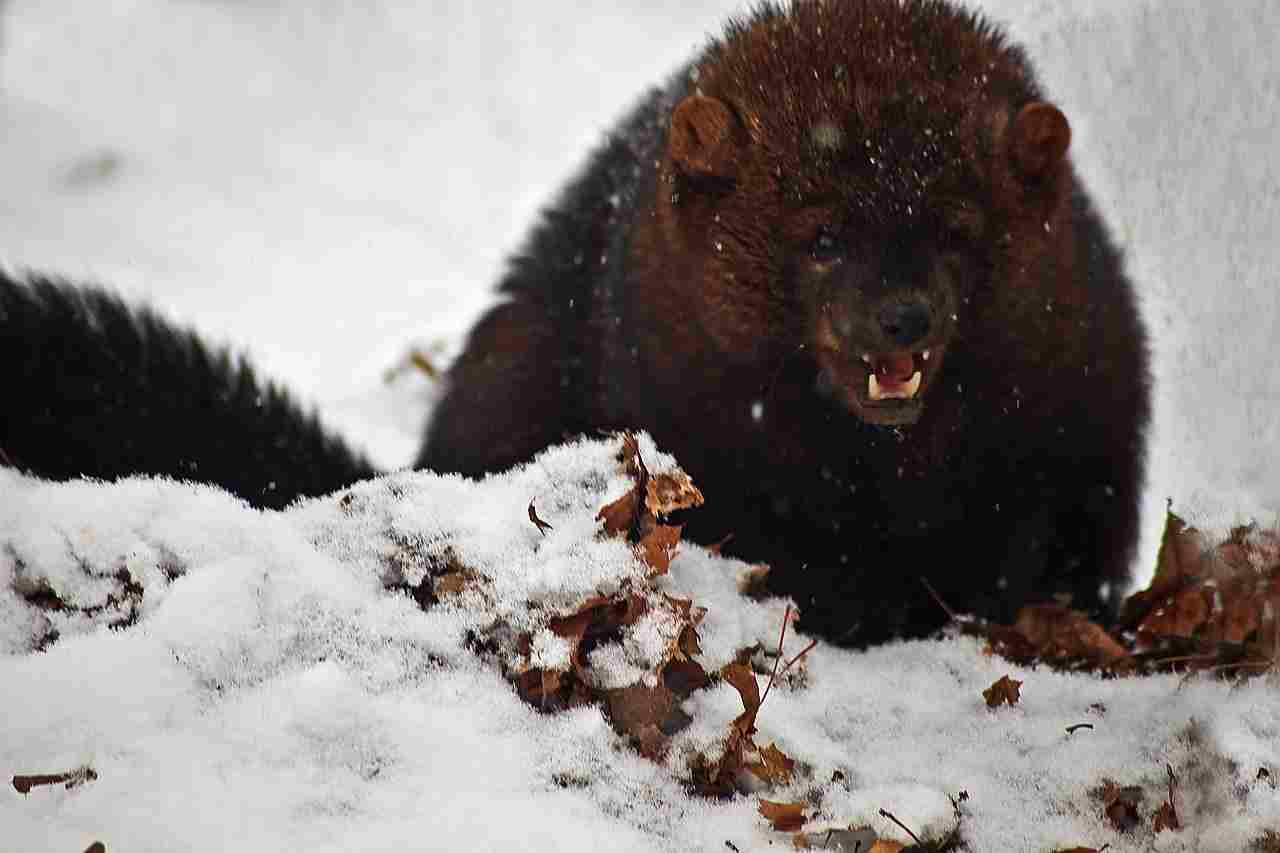
Mink:
PSI not well-documented but estimated to be moderate
Fisher Cat:
PSI not extensively studied, but considered powerful
Comparison:
Fisher cats likely possess a stronger bite force compared to mink.
Ecological Implications:
Strong bite force aids in hunting and consuming a variety of prey, potentially impacting ecosystem dynamics in their respective habitats.
6. Physical Offensive Advantages
Mink:
Sharp, retractable claws and strong jaws for capturing and subduing prey
Fisher Cat:
Sharp claws, powerful jaws, and agility for ambushing and overpowering prey
Comparison:
Both possess offensive adaptations, with fisher cats possibly having a slight advantage due to their larger size.
Ecological Implications:
These adaptations contribute to successful hunting and prey capture, influencing population dynamics of smaller mammals in their ecosystems.
7. Physical Defensive Advantages
Mink:
Agility and ability to escape into water as a defensive strategy
Anal scent glands for releasing a strong-smelling odor as a deterrent
Fisher Cat:
Agility, sharp claws, and a musky odor for defense
Comparison:
Both species rely on agility and defensive secretions, with mink having the advantage of escaping into water.
Ecological Implications:
Defensive mechanisms play a role in predator-prey dynamics and overall ecosystem balance.
8. Speed (Km/hour or Mile/hour)
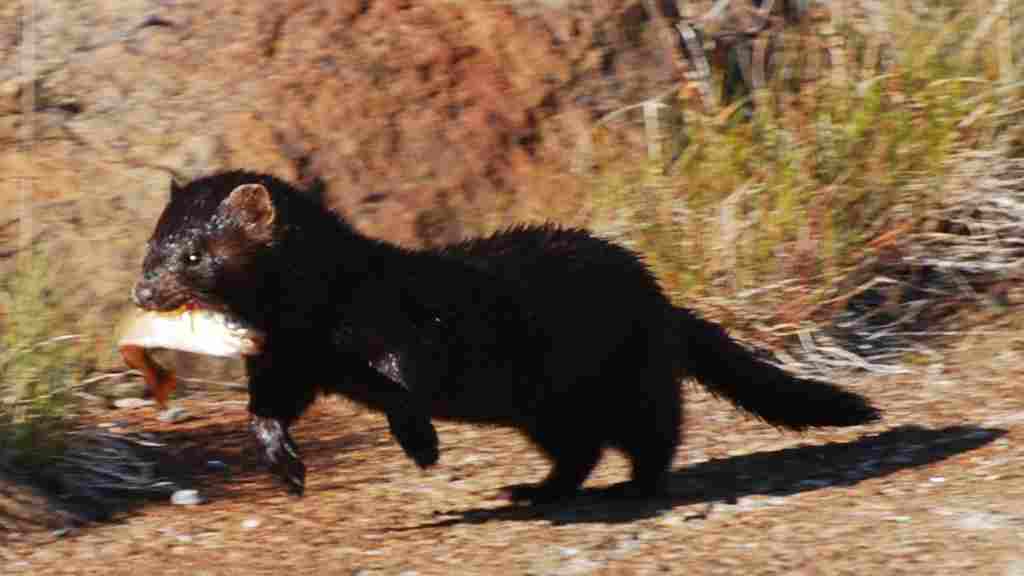
Mink:
Capable of reaching speeds up to 6-10 mph on land
Fisher Cat:
Agile and fast, with estimated speeds of 10-15 mph
Comparison:
Fisher cats are generally faster and more agile than mink.
Ecological Implications:
Speed influences hunting success and evasion from predators, impacting interactions within their ecosystems.
9. Agility
Mink:
Extremely agile both on land and in water
Fisher Cat:
Agile climbers and adept at navigating through dense vegetation
Comparison:
Both species exhibit high levels of agility, with mink being particularly adept in aquatic environments.
Ecological Implications:
Agility enhances their ability to capture prey and avoid predators, shaping their roles within the ecosystem.
10. Overall Physical Capacity
Mink:
Well-adapted for aquatic life, with streamlined bodies and strong swimming abilities
Versatile hunters with sharp claws and keen senses
Fisher Cat:
Adapted for both terrestrial and arboreal habitats, with strength and agility
Powerful predators with sharp claws and a varied diet
Comparison:
While both are skilled hunters, mink excel in aquatic environments, while fisher cats display versatility in terrestrial and arboreal settings.
Ecological Implications:
Their diverse physical capacities contribute to maintaining ecological balance by targeting different prey species.
11. Habitat Preference(s)
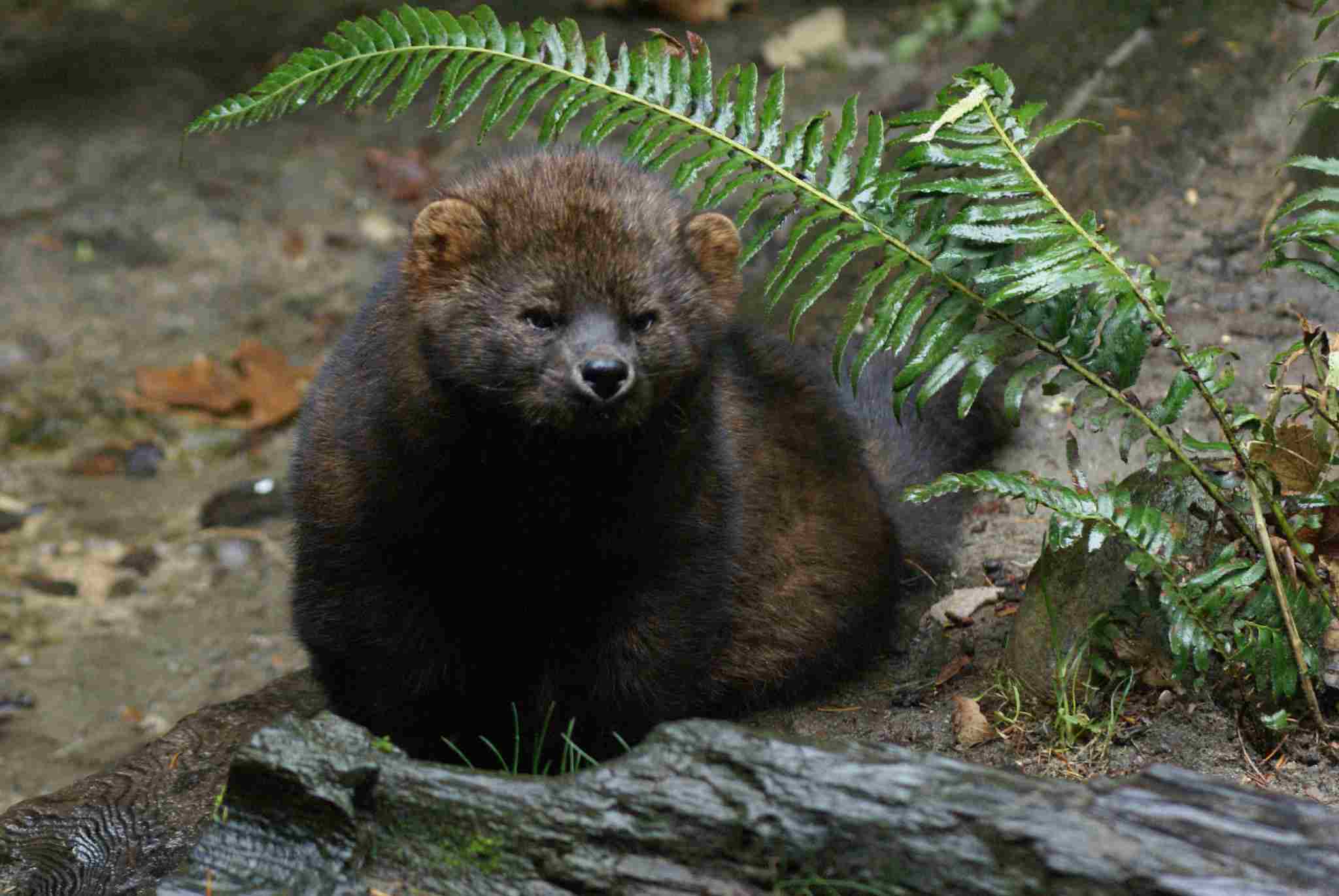
Mink:
Primarily found near freshwater habitats like rivers, lakes, and marshes
Fisher Cat:
Prefers forested areas with dense vegetation and proximity to water sources
Comparison:
Mink are more closely associated with aquatic environments, while fisher cats thrive in forested ecosystems.
Ecological Implications:
Habitat preferences impact the distribution of these species, influencing the dynamics of local ecosystems.
12. Tracks
Mink:
Distinctive tracks with five toes and webbed imprints in mud near water
Fisher Cat:
Paw prints with five toes and retractable claws, often showing bounding patterns
Comparison:
Both exhibit five-toed tracks, but mink’s webbed prints are a unique feature.
Ecological Implications:
Tracking and identifying these prints are essential for understanding their presence and behavior within ecosystems.
13. Lifespan
Mink:
Typically live 3 to 4 years in the wild
Fisher Cat:
Longer lifespan, averaging around 7 to 10 years
Comparison:
Fisher cats generally have a longer lifespan compared to mink.
Ecological Implications:
Lifespan influences population dynamics and reproductive strategies, impacting the balance of predator-prey relationships in ecosystems.
14. Mode of Feeding
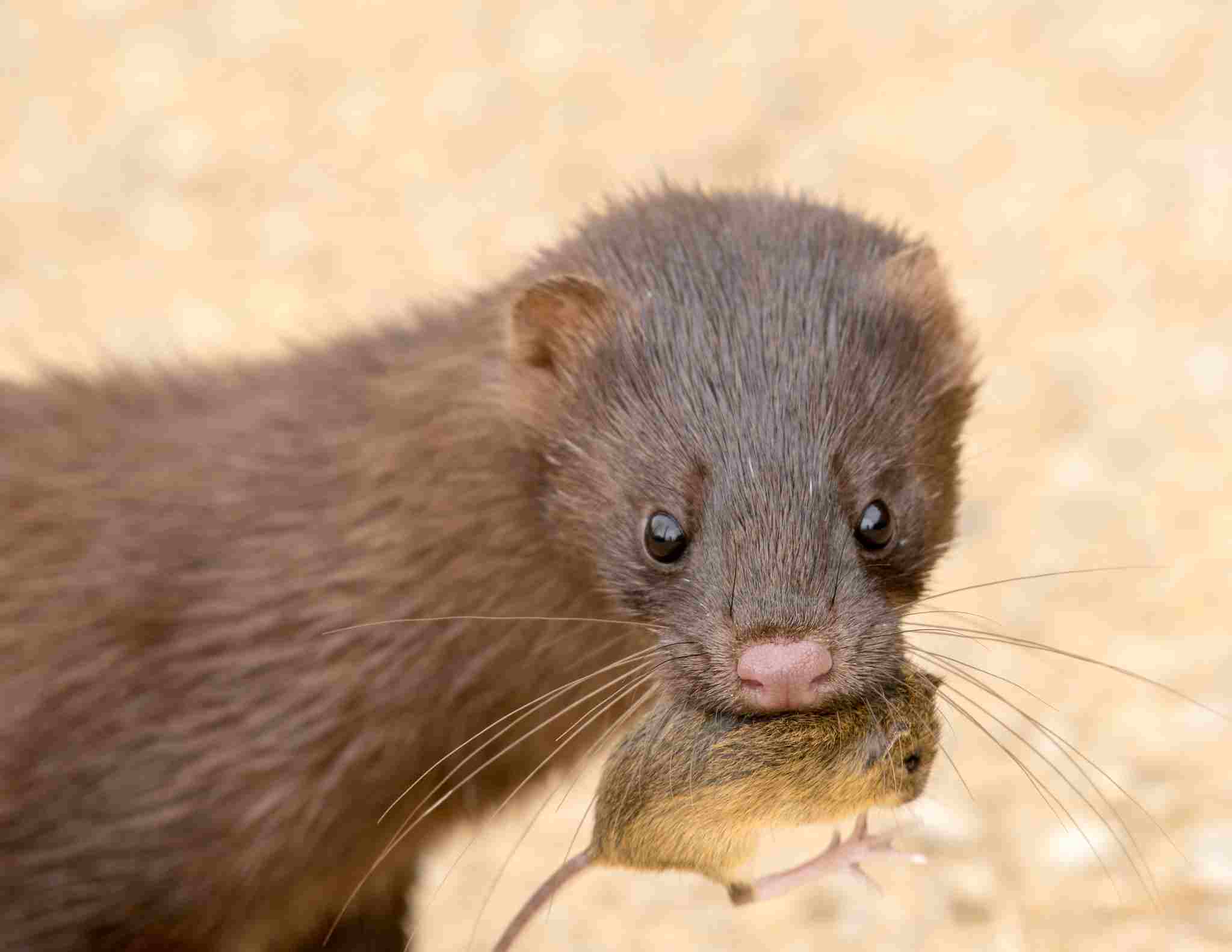
Mink:
Carnivorous diet, primarily feeding on fish, amphibians, small mammals, and birds
Skilled hunters both in water and on land
Fisher Cat:
Carnivorous diet consisting of small to medium-sized mammals, birds, and occasionally fish
Agile hunters capable of ambushing prey in trees and on the ground
Comparison:
Both species share a carnivorous diet but may focus on different prey based on their habitats and hunting strategies.
Ecological Implications:
Their feeding habits contribute to controlling populations of various prey species, influencing the structure of local ecosystems.
15. Intelligence
Mink:
Display problem-solving abilities and adaptability
Known for cunning hunting strategies
Fisher Cat:
Intelligent hunters with problem-solving skills
Exhibit curiosity and adaptability to diverse environments
Comparison:
Both mink and fisher cats demonstrate intelligence and adaptability in their hunting behaviors.
Ecological Implications:
Intelligent hunting strategies contribute to the success of these predators, influencing the dynamics of prey populations.
16. Social Behavior
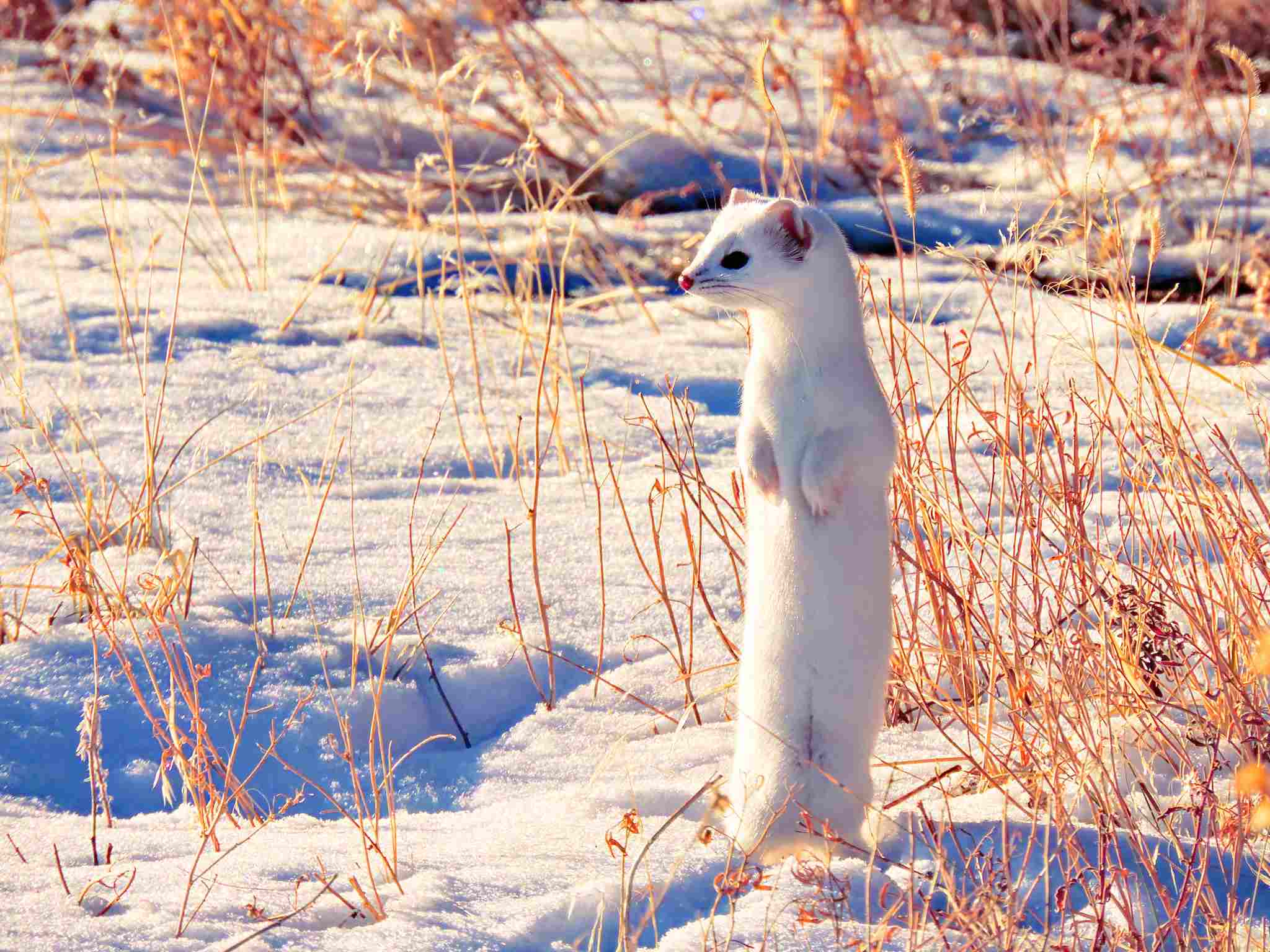
Mink:
Generally solitary, territorial animals
Mating pairs may form temporarily during the breeding season
Fisher Cat:
Solitary with well-defined territories
Limited social interactions outside of the mating season
Comparison:
Both species are primarily solitary, emphasizing territorial behaviors.
Ecological Implications:
Solitary behavior affects population density and distribution within their respective ecosystems.
17. Mode of Reproduction
Mink:
Polygamous mating system, with males mating with multiple females
Breeding season typically occurs in late winter or early spring
Fisher Cat:
Polygamous, with males seeking multiple mates
Breeding season usually in late winter or early spring
Comparison:
Both species follow a polygamous mating system and share a similar breeding season.
Ecological Implications:
Reproductive strategies influence population dynamics and genetic diversity within their ecosystems.
18. Parental Behavior
Mink:
Female mink construct nests for giving birth to kits.
Kits are born blind and depend on the mother for nursing and protection.
Fisher Cat:
Female fisher cats give birth to kits in dens.
Kits are born altricial and require extensive care from the mother.
Comparison:
Both species exhibit maternal care, providing protection and nourishment to their offspring.
Ecological Implications:
Parental behaviors impact the survival and development of the young, influencing the population dynamics of these species in their ecosystems.
19. Proximity to Human-Inhabited Areas
Mink:
Adapt well to human-altered environments and can be found near water bodies in urban areas.
Fisher Cat:
Generally shy but may adapt to suburban and rural areas, occasionally coming close to human habitats.
Comparison:
Both species can tolerate human presence to some extent, with mink more commonly found in urban settings.
Ecological Implications:
Human proximity can lead to interactions, potentially impacting the behavior and distribution of these species.
20. Behavior Toward Humans
Mink:
Typically avoid human interaction but may explore areas near water bodies in urban environments.
Fisher Cat:
Generally shy and elusive, avoiding direct contact with humans.
Comparison:
Both species exhibit a cautious approach to human interaction.
Ecological Implications:
Their behavior toward humans influences human-wildlife interactions and perceptions in shared habitats.
21. Danger Posed to Humans
Mink:
Generally pose minimal danger to humans; bites are rare.
Fisher Cat:
Rarely pose a threat to humans; may act defensively if cornered but avoid confrontations.
Comparison:
Both mink and fisher cats are not considered significant threats to human safety.
Ecological Implications:
Low danger to humans allows coexistence, impacting attitudes towards these species and their conservation status.
22. Associated Precautions
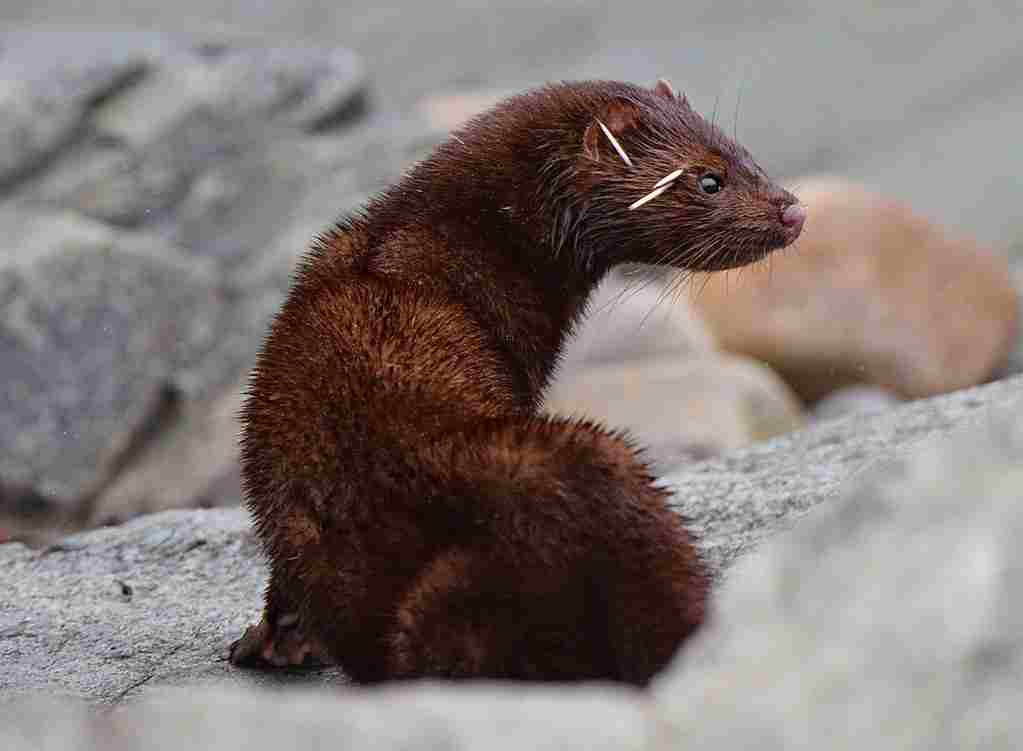
Mink:
In areas with mink populations, it’s advisable to secure poultry and small pets to prevent predation.
Avoid leaving food scraps near water bodies to minimize attraction.
Fisher Cat:
Precautions include securing garbage bins and avoiding leaving pet food outside.
Maintain a safe distance if encountering one, as they may be frightened and defensive.
Comparison:
Similar precautions involve minimizing attractants and securing potential sources of food to reduce encounters with both species.
Ecological Implications:
Human awareness and precautionary measures can contribute to harmonious coexistence, benefiting both wildlife and humans.
23. Conservation Status
Mink:
Conservation status varies by species. American mink is of least concern, while European mink faces threats and is classified as endangered.
Fisher Cat:
Generally not listed as a species of concern; populations appear stable.
Comparison:
American mink and fisher cats have different conservation statuses, reflecting varying degrees of concern.
Ecological Implications:
Conservation efforts may be needed for endangered mink species to ensure their role in ecosystems is maintained.
Summary of Comparison
Appearance:
Mink: Sleek, semi-aquatic with varied fur colors.
Fisher Cat: Robust, grizzled appearance with dark-brown fur.
Size:
Mink: 1.5 to 3.5 pounds.
Fisher Cat: 4 to 14 pounds, generally larger.
Weight:
Mink: Lighter, 1.5 to 3.5 pounds.
Fisher Cat: Heavier, 4 to 14 pounds.
Bite Force (PSI):
Mink: PSI moderately estimated.
Fisher Cat: Potentially stronger bite force.
Physical Offensive Advantages:
Mink: Sharp claws and strong jaws.
Fisher Cat: Sharp claws, powerful jaws, and agility.
Physical Defensive Advantages:
Mink: Escape into water, anal scent glands.
Fisher Cat: Agility, sharp claws, musky odor.
Speed:
Mink: 6-10 mph.
Fisher Cat: Faster, 10-15 mph.
Agility:
Mink: Extremely agile in water and on land.
Fisher Cat: Agile climbers and adept in dense vegetation.
Overall Physical Capacity:
Mink: Aquatic specialization.
Fisher Cat: Versatility in terrestrial and arboreal habitats.
Habitat Preference(s):
Mink: Freshwater habitats.
Fisher Cat: Forested areas with water sources.
Tracks:
Mink: Webbed prints near water.
Fisher Cat: Paw prints with retractable claws.
Lifespan:
Mink: 3 to 4 years.
Fisher Cat: 7 to 10 years, generally longer.
Mode of Feeding:
Both carnivorous, focusing on different prey based on habitats.
Intelligence:
Both exhibit problem-solving skills and adaptability.
Social Behavior:
Both primarily solitary with defined territories.
Mode of Reproduction:
Polygamous mating, breeding in late winter or early spring.
Parental Behavior:
Maternal care with protection and nourishment.
Proximity to Human-Inhabited Areas:
Mink: Tolerant, found in urban areas.
Fisher Cat: Generally shy, adapting to suburban and rural areas.
Behavior Toward Humans:
Both cautious, avoiding direct contact.
Danger Posed to Humans:
Low threat, rarely posing danger.
Associated Precautions:
Similar precautions to minimize encounters.
Conservation Status:
Mink: Varies, with some species endangered.
Fisher Cat: Generally not a species of concern.
Conclusion
I. Similarities:
Both mink and fisher cats belong to the Mustelidae family and exhibit carnivorous diets.
They share characteristics such as polygamous mating systems and parental care for their offspring.
II. Differences:
– Mink are more adapted to aquatic environments, while fisher cats display versatility in terrestrial and arboreal habitats. – Fisher cats are generally larger, have a longer lifespan, and exhibit different conservation statuses compared to mink species.
